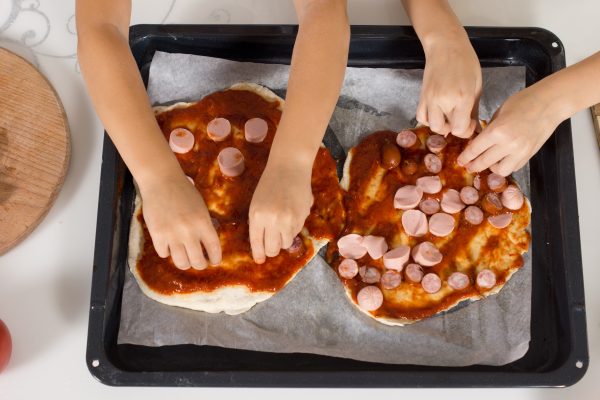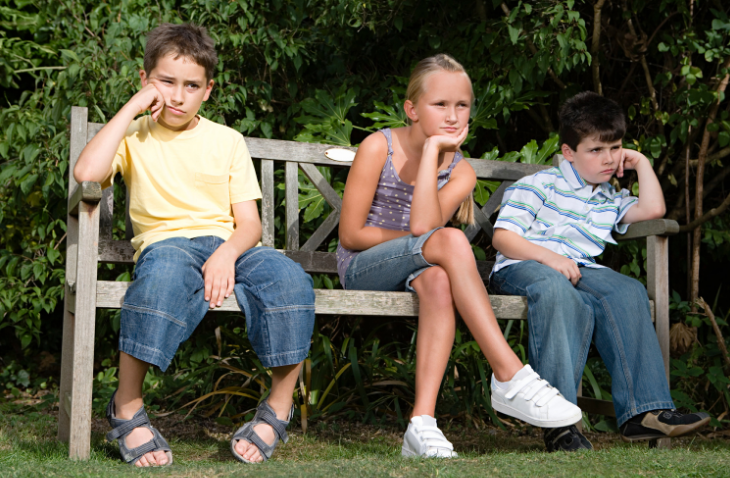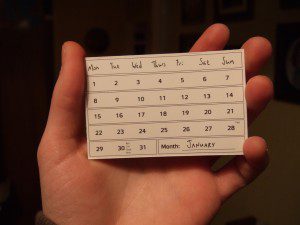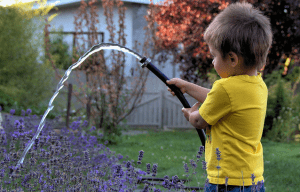If you ask kids about their favorite foods, pizza will be near the top of almost everyone’s list. Topped with traditional pepperoni or healthy veggies, pizza isn’t just a Friday night treat for your kids; it’s the perfect way to teach a list of valuable cooking skills. If you start teaching your kids to cook when they’re young and at the “I wanna help” stage, they’re more likely to grow up to be adults who know how to cook healthy meals for themselves. So turn on some music, get out the ingredients, and have a pizza-making party.
Kids are always more likely to eat foods they make themselves, so this is the perfect opportunity to get them to try peppers, mushrooms, ham, or any other food they’ve been reluctant to taste. They can even make a pizza with different toppings on each slice, or mini pizzas of various flavors, to allow them to try new ingredients in small amounts. Just make sure to make some plain cheese or pepperoni pie, too, in case the tasting falls flat.
Yeast and Dough Making
When you make the pizza dough, it’s a great time to teach about yeast, bread rising, and the circle of life. Yeasts are small, one-celled creatures that live everywhere on earth. When you capture the right ones, they eat the food you give them and start to grow. When your kids eat a lot, what happens? They burp, and so do yeasts when they get full of the sugars they’ve been eating. The gas they expel is what makes the dough expand, causing the bread or pizza crust to rise. Once you put the dough in the oven, the yeasts die, leaving delicious bread for your kids to eat.
Teach your kids about yeast before making the crust, and they can watch all the steps of the process up close. When you drop the yeast into warm water, they can watch it bloom and grow. The rising dough will puff up with the yeast’s “burps,” and it will rise again after they punch the dough down. While the pizza bakes, kids can see a final rise before it finishes browning and baking.
Toppings and Tool Skills
Even the smallest children can sprinkle cheese or place slices of pepperoni on pizza, but by the time they’re reached grade school age, most kids are old enough to learn some basic kitchen skills. Successful cooking always begins with safety, and this is the ideal time to introduce safe techniques in the kitchen.
Children 8 years and older are old enough to learn basic knife skills. If you don’t know the proper way to hold a knife and to cut food, research and practice yourself before teaching your kids. Show them how to hold the knife and how to curl their fingers back on the other hand that’s holding the food. Teach about chopping up and down slowly while sliding the food underneath the blade for the safest cutting technique. Some of the best pizza ingredients for cutting practice are:
-
Peppers
-
Onions
-
Mushrooms
-
Sliced ham
Once your kids have mastered basic knife skills, move on to using a box grater. This handy kitchen tool is just right for grating blocks of fresh mozzarella cheese as well as slicing sticks of pepperoni. Younger kids should wear oven mitts or other protective wear until they get used to using this tool.
Baking and Oven Chemistry
It’s often said that if cooking is an art, baking is a science. You can fudge ingredients and make up different flavor combinations when you cook, but if you omit a crucial ingredient in baking, your recipe will never turn out right. The final baking part of cooking pizza is the ideal time to teach your kids about careful measurements, chemistry, and science.
Try some fun experiments by making tiny portions of dough without ingredients such as salt or yeast. What happens to the ingredients? Do they bake into tasty pizza? Even dough with the wrong measurement of ingredients will produce a crust that doesn’t cook right. Showing kids how to level off measuring spoons and cups is a good way to start them on learning precise measurement, a skill that will transfer directly into science class in school.
Once you’ve made the right kind of dough, emphasize the importance of preheating the oven and setting it at the right temperature. Teach them what would happen if the oven was too hot or cool during the cooking time. When the oven is set correctly, put the pizza in the oven for them and help your kids to watch what happens. Point out how the dough rises even more with the heat of the oven, and show the color changes from the sugars in the dough browning from the heat.
Use this final cooking time to revisit kitchen safety. Use oven mitts, and always look behind you when opening the oven. Instill good cooking habits now, and your kids can learn to safely cook entire menus they’ll be proud to serve the family.
















